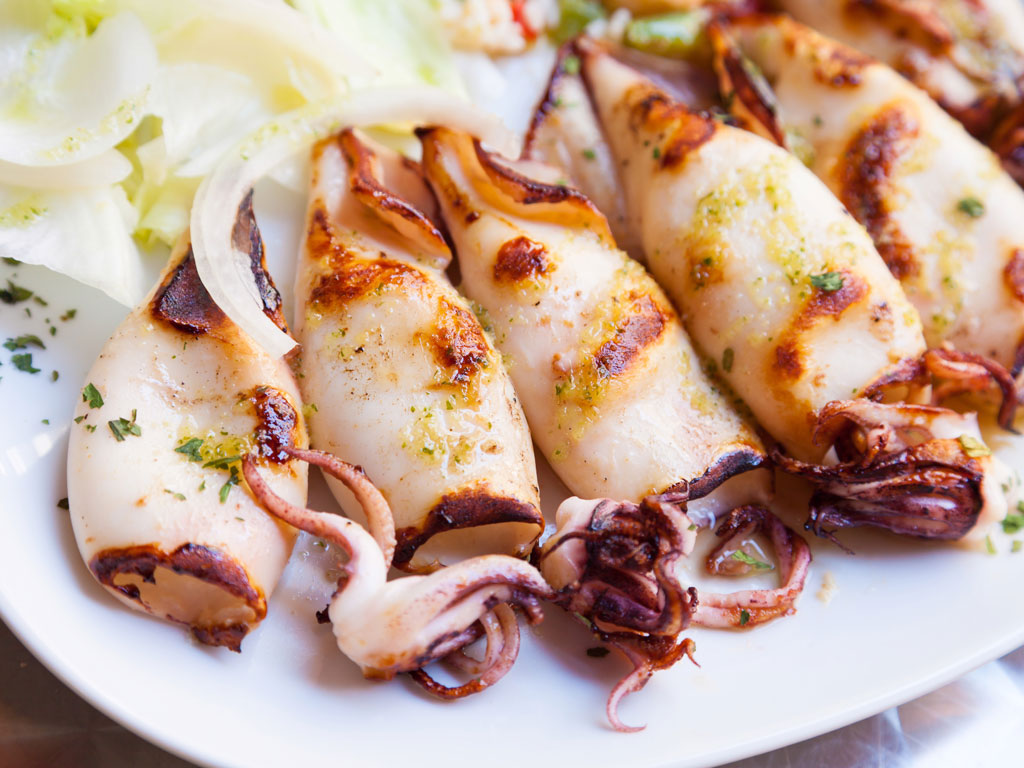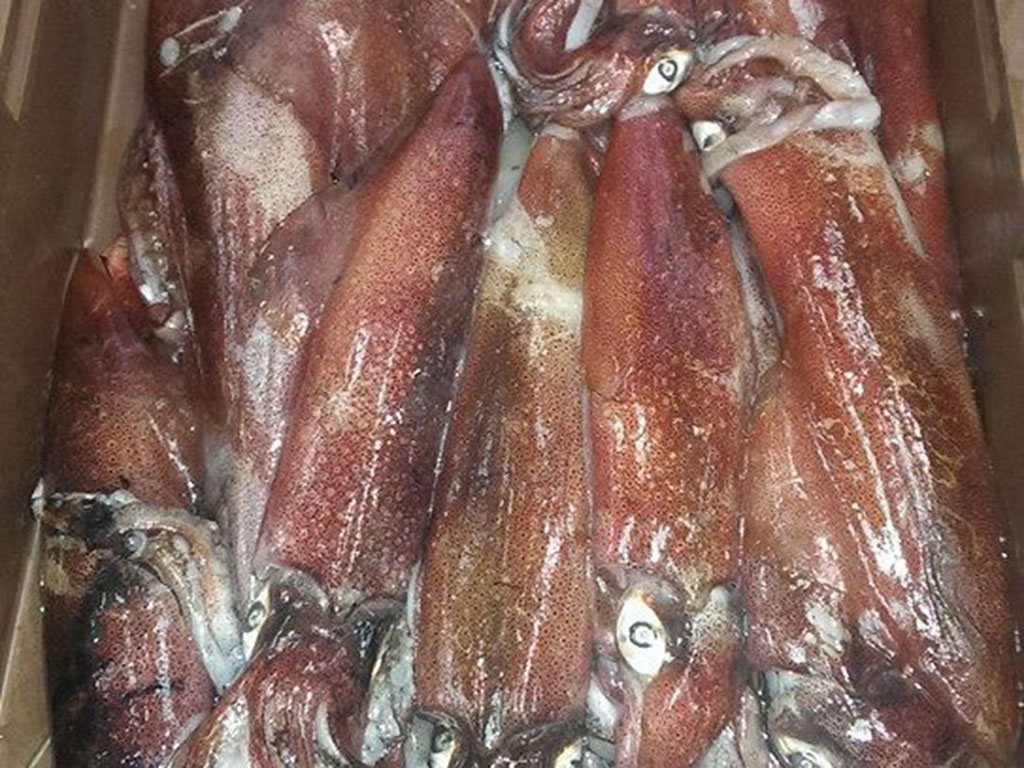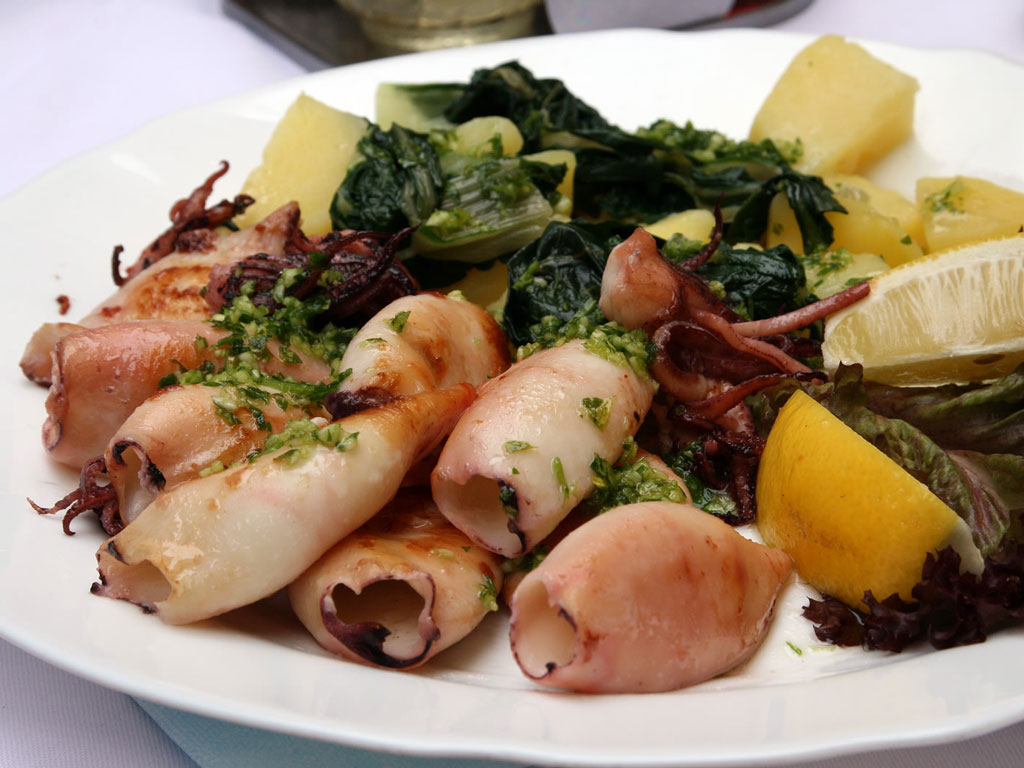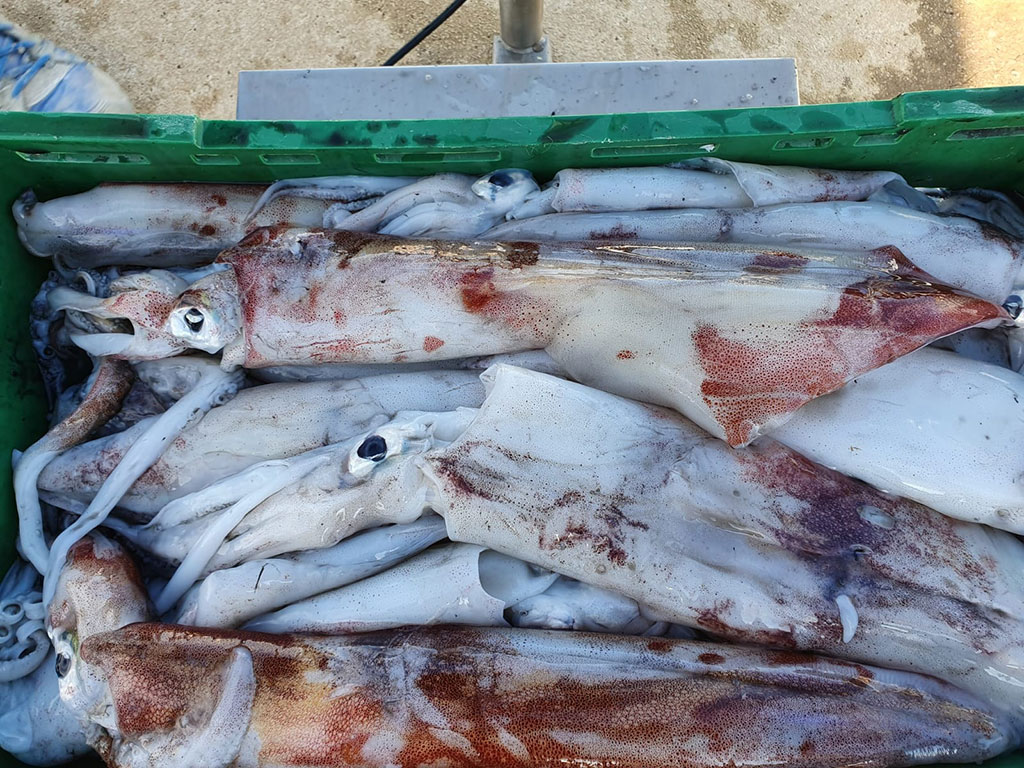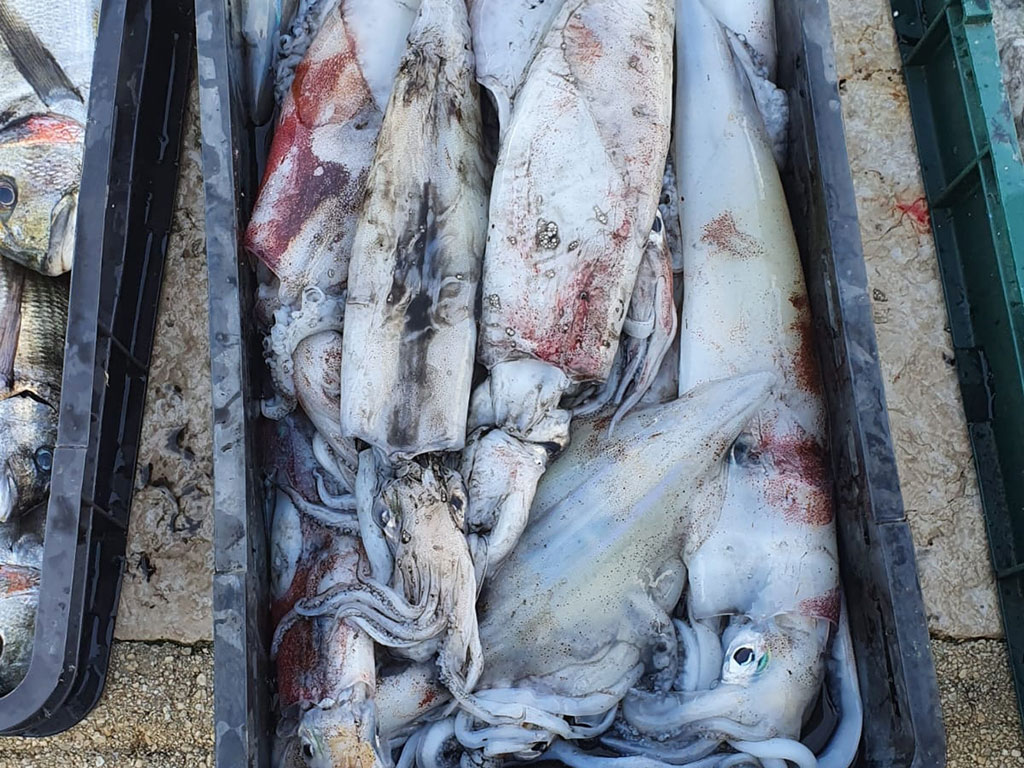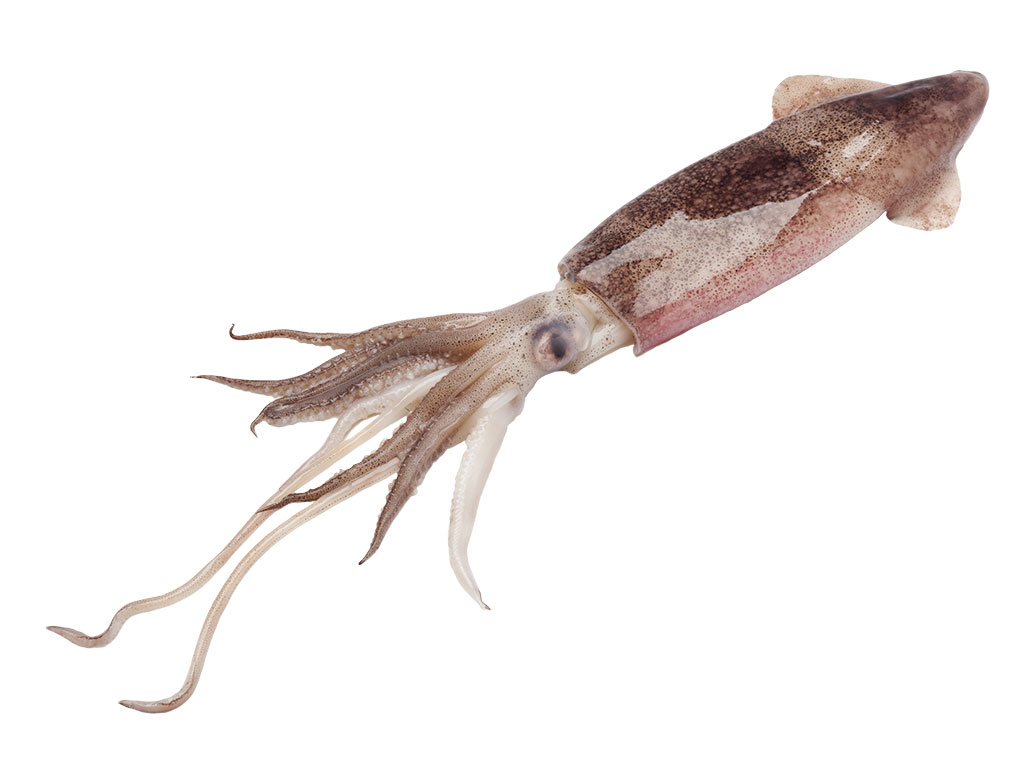
Squid
lat. Loligo vulgaris
Squid
<p>Squid is localy most famous member of cepalophods. It can live maximum 3 years and during that time it can grow up to 1m in lenght and reach up to 3 kg.</p>
<p>
It has a shape characteristic for cepalophods with the head clearly separated from the mantle by the neck passgae. Rear part of the conical-spindle hydrodinamic body has two elongated traingular fins ( 2/3 of the body’s length big) located laterally. They produce vawy movemens squid uses to slowly move around. When swimming fast, they are glued to the body and wrap the mantle.</p>
<p>
Squids were eaten from the old times. The ways of preparation were developed first in Greece and Byzantine and later in Venetian Republic and its colonies. It has been reported that dishes with squids were also prepared in Spain and south France.</p>
Energy and nutritional value
Energy value of 100g of fresh squid is 77 kcal/322 kj of what 1% are carbohydrates, 1 % is fat and 16% proteins.
They are very important source of proteins (32% of RDA in 100g) . Unlike the proteins of meat origin, these are easily digestible (have less colagen), more efficient and have a more favorable amino acid composition. They are poor in saturated fatty acids and natrium, but rich in cholesterol.
Besides being rich in high quality proteins, sqiuds are a good source of vitamins and minerals: B12, riboflavin, niacine, panthotenic acid, vitamins E, C and B6, thiamine, selenium, phosphorus, zinc, magnesium, potassium, iron and calcium.



